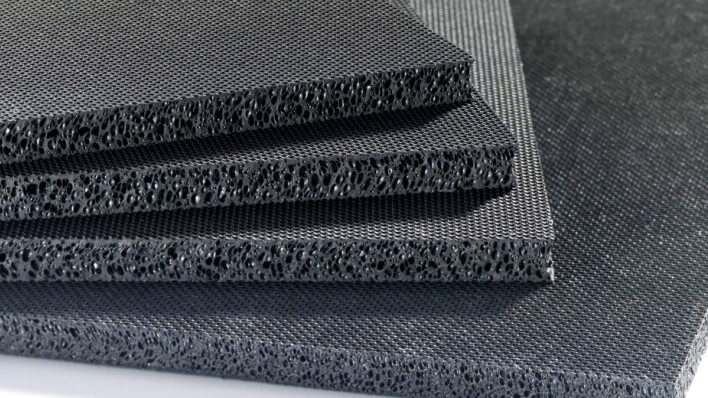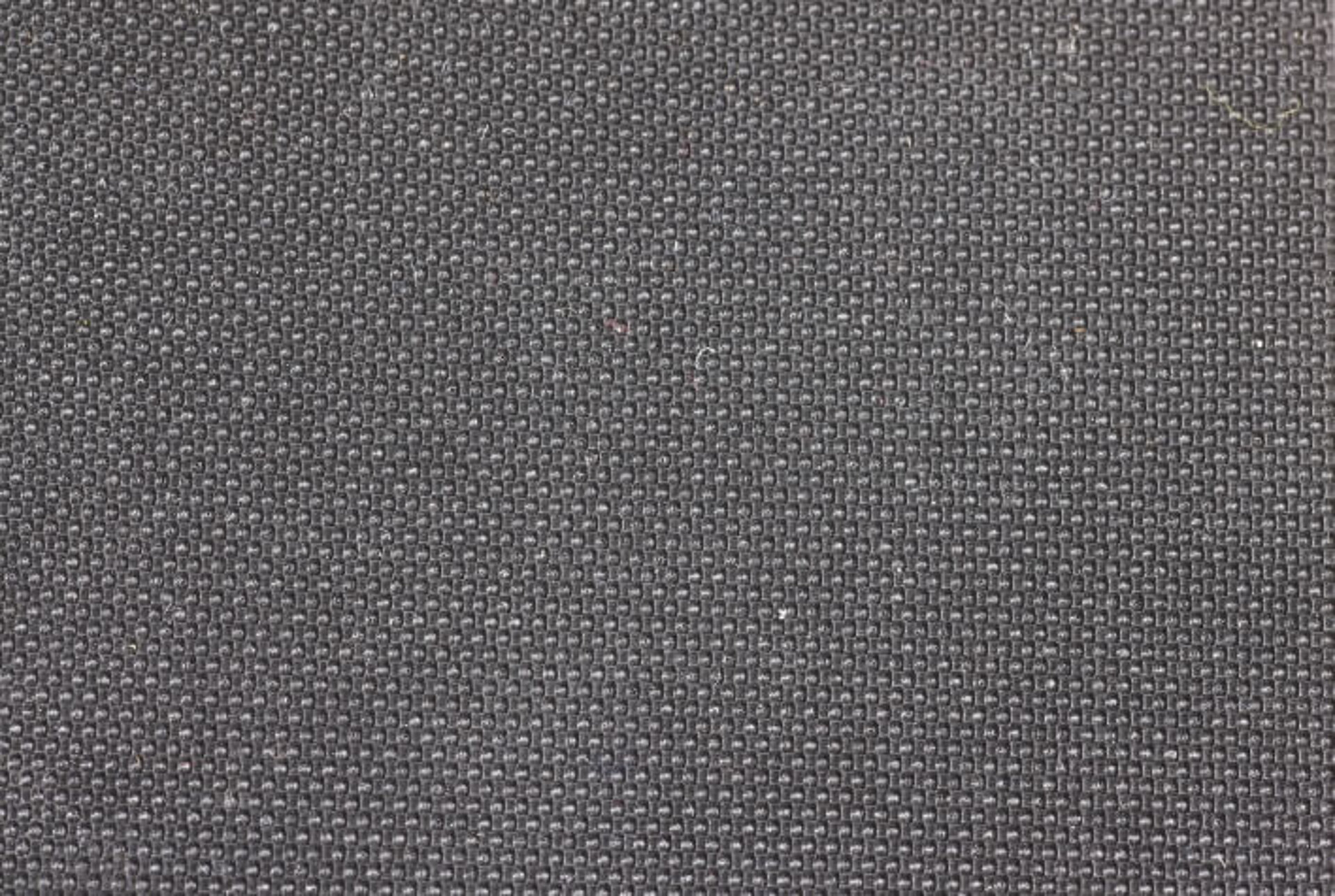
Sponge rubber
Sponge rubber is a rubber-based material used mainly for insulation and sealing.
Sponge rubber is made from natural and/or synthetic rubbers, producing different material properties depending on their mixture. Sponge rubber has a mixed cellular structure with mostly open cells and a dense outer skin.
In contrast to cellular rubber, which is based on natural and/or synthetic rubbers as well, sponge ruber has a closed outer skin. The dense, robust, and elastic outer skin lends the surface of sponge rubber a generally better protection compared with cellular rubber. The outer skin also provides excellent sealing properties. If the surface is damaged, however, the material can become saturated with liquid due to its open cells. The mixed cellular structure of sponge rubber ensures high compression elasticity and good recovery. The material firmly adapts to all surrounding surfaces under slight pressure, thus creating a seal.
Different mixtures can have an influence on the strength and other properties of the materials. The various natural and/or synthetic rubbers provide the base structure for rubber mixtures. The final properties are determined by further additives such as fillers, softeners, ageing inhibitors, and cross-linking chemicals. Rubber mixtures are differentiated into four main groups:
Natural rubber (NR) is suitable for normal technical applications without particularly strict requirements. It is characterised by high elasticity and good cold behaviour. Ethylene-propylene-diene rubber (EPDM) is suitable for outdoor use and is highly resistant to ageing, ozone, light, weathering, and temperature. Chloroprene rubber (CR) is suitable for strict requirements with respect to temperature, flammability, and resistance to oils, greases, acids, and bases. It is also highly resistant to ageing, ozone, and weathering. Nitrile rubber (NBR) is resistant to oils, greases, and to gasoline to some extent, but is flammable.
The macro images on this page are intended to provide an overview of the special features of different foam materials. For the sake of clarifying the differences in cell size and structure, the same image excerpt is used throughout. Of course, many other types are available than those highlighted.

Lorenz Cramer
Head of Sales
+49 (0) 2645 9523-14
Send email

Jana Bastian
Sales
+49 (0)2645 9523-18
Send email

Richard Maier
Sales
+49 (0) 2645 9523-37
Send email

Natalja Weigel
Sales
+49 (0) 2645 9523-28
Send email


